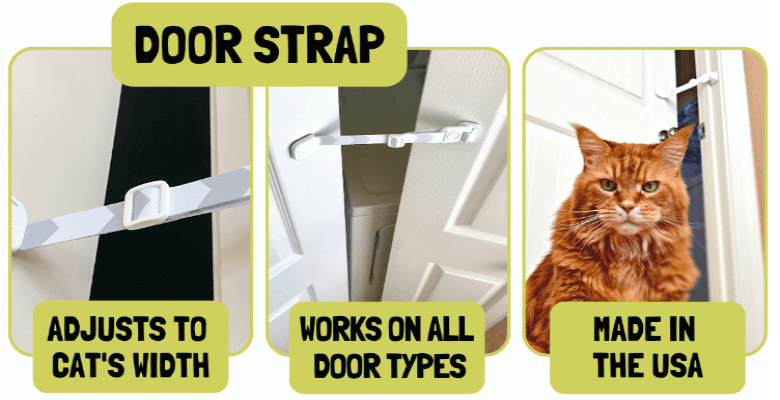Cats are very social pets who like hanging out with other cats or dogs. People decide to get another furry friend for their cat for different reasons. It usually takes a few weeks to a few months for pets to get used to each other. What warning signs should you look for to know that your pets aren’t getting along?
KEY TAKEAWAYS
It’s normal at first for cats to hiss, growl, etc. but alarming persistent signs in cats include hiding, not eating, overgrooming, and continued attacks.
Key points are to plan thoroughly, be patient through an adjustment period, and watch for signs of serious, persistent distress in pets which may indicate incompatibility.
Warning signs when introducing a new cat to resident cats
When your pets first meet, it’s common for cats to hiss, yowl, growl, or make their fur stand on end to look bigger. Cats may even fight or the cat who lives there already might start spraying places to mark their territory. These aggressive behaviors are normal during the adjustment period as cats get used to each other.
Other alarming signs indicating the process is not going smoothly include the following:
- Your new kitty continues to hide.
- Your resident cat has changed their habits, and does not come to their owners.
- The pet starts to groom excessively.
- The cat has changed their eating habits which means a cat under or overeats.
- Your current cats stop drinking.
- Your resident cat starts to leave territorial marks, feels unhappy and does not want to play.
- Your resident cat does not stop attacking the new kitty.
Be patient. It can take a while for cats to live together happily. It’s very rare that cats won’t learn to get along, coexist alright, and even become buddies after time passes. We’ve gotten letters from people telling us how sometimes cats were chill right off the bat with a new feline friend. But for other kitties, it took nearly six whole months for them to make peace with having a new roommate and stop fighting or feeling freaked out and upset.
Every cat duo is different, so give yours a chance. But if warning signs pop up that the introduction isn’t going smoothly or tensions don’t ease up after many months, talk to your vet. They can help you make sure each cat’s needs are met and give tips so everyone under your roof feels safe and comfy again soon. Don’t lose hope! There are tricks to help even feuding kitties become companions.
Cat lovers – do you want endless inspiration for your feline-centric life? Then be sure to follow our Pinterest page! You’ll discover ideas to spoil your kitties with new toys, tasty treats, and cozy beds. Plus, find cute cat wall art, furniture just right for cat naps, and clever organizing solutions for all that cat gear.
Warning signs when introducing a new cat to dogs
Some dogs coexist great with cats, while others struggle to live with felines. When bringing a cat home to your dog, closely watch your dog’s body language for signs of stress, including:
- The dog wants to chase and capture the animal.
- The dog stays very focused on the cat.
- Your dog stares, barks, or growls.
- The pet feels nervous or uncomfortable.
- The dog does not listen to your commands or when you call his/her name.
- The dog behaves aggressively towards the kitten or cat.
- You noticed reduced playing activity in your dog.
- The dog has redirected aggression towards other animals or people in the household.
During the first meetings between pets, cat owners can tell how their kitty is handling it by watching for these warning signs:
- Cat’s ears are pinned back.
- Fluffy ball raises their back, hisses around the dog.
- The cat feels uncomfortable and behaves aggressively.
- He or she attacks a calm dog.
- The cat hisses or growls.
- Feline hides excessively.
- A new cat demonstrates anxiety-related scratch marking, under or overeating.
If your cat stops eating normal amounts, drinking water, using their litter box, or acting cheerful, talk to your vet. When a cat’s normal routines get disrupted, it signals something could be medically wrong or that emotional stress is making them sick.
Cats don’t often pick fights with dogs, but some kitties do get aggressive around new canine pals. When you introduce cats and dogs, always keep in mind that dogs can badly hurt a cat, even accidentally while playing around. Their big size and strength compared to little cats can lead to injuries.
So it’s vital to make safety the top priority. Have dogs on leashes and cats in carriers at first. As they get used to smells and sounds of one another, let them meet briefly while keeping dogs restrained and calming. If a dog reacts too intensely or a cat lashes out from fear, separate them again. Rushing things risks trauma. After many sessions under control, relaxed behavior might show they are ready for loose interaction.
If you patiently introduce your pets without rushing, you’ll likely get them to accept each other over time. But if you don’t see the tense or aggressive behaviors start to decrease after a while, your dog may need extra training to learn how to coexist with this new family member.
With consistency and support, many dogs can be taught that a cat is a friend, not a threat or toy. But the instincts to chase and grab small running animals are strong in some breeds. If your dog’s reactions seem unsafe no matter what you try, accepting they won’t be housemates may be kindest for both pets even if sad for you. Every animal has distinct traits guiding how well they socialize. Respect those differences while doing all you can to ease tensions.

RELATED READING
How to Keep My Dog Out of the Litter Box with Door Buddy
Are Three Cats Too Many?
Introducing a new cat to a resident kitty or dog—final thoughts
No matter their age or personality, most cats give warning signs when meeting a new cat or pet. Planning introductions step-by-step and waiting until each cat feels at ease is key to avoid fights.
Warning signs when introducing cats: FAQ
How quickly cats learn to get along depends on lots of things – like each cat’s unique personality, age, energy level, past experiences, and how steady their owner introducess them. Some young kittens might play happily together right away. Shy or solitary senior cats can take longer feeling chill with a new feline in their space. And hyper cats might do better with gradual intros over many weeks so they slowly get comfortable. It’s really case-by-case for each furball duo and household.
It’s common for cats to get aggressive or freaked out when first meeting another cat. To prevent scary introductions, cat owners need to plan the whole process step-by-step. Watch how each cat acts closely, and don’t hurry things! Rushing is what gets cats overwhelmed and lashing out from fear.
Introducing cats properly takes a ton of patience! But, when owners respect cues to go slow while making sure each cat has their own safe retreat space, most felines can learn to live pretty harmoniously together over time. Every bonding journey has bumps, yet kitties usually adjust faster than we think once the initial shock wears off IF we listen when they say “not yet!” That thoughtful planning gives happy results in the end for newly blended cat households.
To know if new cats are getting along, watch their body language. Signs a meetup is going smoothly include relaxed poses, slow blinking at each other, and mutual grooming by licking each other’s fur. These clues show trust and affection forming.
YOU MIGHT BE INTERESTED IN
How to Introduce Two Cats to Each Other?
Please note: this article has been provided only for informational purposes. If your cat is showing any signs of any disease, please contact your vet immediately.
*FTC Disclosure: This page contains affiliate links. If you make a purchase after clicking on the links, Meowpassion will get a small commission at no extra cost to you. We are dedicated to finding the coolest products for cats, cat owners and lovers, and we never recommend anything that we don’t love or trust.


